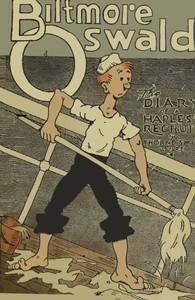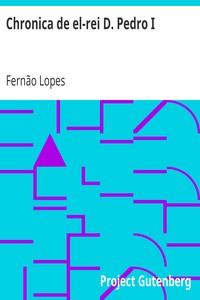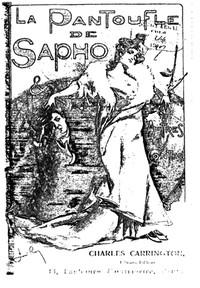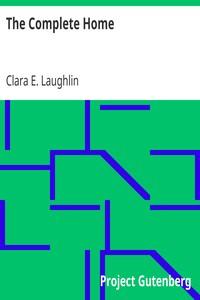|
|
Read this ebook for free! No credit card needed, absolutely nothing to pay.Words: 77711 in 25 pages
This is an ebook sharing website. You can read the uploaded ebooks for free here. No credit cards needed, nothing to pay. If you want to own a digital copy of the ebook, or want to read offline with your favorite ebook-reader, then you can choose to buy and download the ebook.

: An Outline of the Relations between England and Scotland (500-1707) by Rait Robert S Robert Sangster - Scotland Foreign relations England; England Foreign relations Scotland United Kingdom@FreeBooksTue 06 Jun, 2023 INTRODUCTION ix " B. THE FEUDALIZATION OF SCOTLAND 204 " C. TABLE OF THE COMPETITORS OF 1290 214 INDEX 215 INTRODUCTION "These fertile plains, that soften'd vale, Were once the birthright of the Gael; The stranger came with iron hand, And from our fathers reft the land." We venture to plead for a modification of this theory, which may fairly be called the orthodox account of the circumstances. It will at once occur to the reader that some definite proof should be forthcoming that the Celtic inhabitants of Scotland, outside the Lothians, were actually subjected to this process of racial displacement. Such a displacement had certainly not been effected before the Norman Conquest, for it was only in 1018 that the English of Lothian were subjected to the rule of a Celtic king, and the large amount of Scottish literature, in the Gaelic tongue, is sufficient indication that Celtic Scotland was not confined to the Highlands in the eleventh century. Nor have we any hint of a racial displacement after the Norman conquest, even though it is unquestionable that a considerable number of exiles followed Queen Margaret to Scotland, and that William's harrying of the north of England drove others over the border. It is easy to lay too much stress upon the effect of the latter event. The northern counties cannot have been very thickly populated, and if Mr. Freeman is right in his description of "that fearful deed, half of policy, half of vengeance, which has stamped the name of William with infamy", not very many of the victims of his cruelty can have made good their flight, for we are told that the bodies of the inhabitants of Yorkshire "were rotting in the streets, in the highways, or on their own hearthstones". Stone dead left no fellow to colonize Scotland. We find, therefore, only the results and not the process of this racial displacement. These results were the adoption of English manners and the English tongue, and the growth of English names, and we wish to suggest that they may find an historical explanation which does not involve the total disappearance of the Scottish farmer from Fife, or of the Scottish artisan from Aberdeen. What then were the influences which, between 1066 and 1300, produced in the Scottish Lowlands some of the results that, between 1746 and 1800, were achieved in the Scottish Highlands? That they included an infusion of English blood we have no wish to deny. Anglo-Saxons, in considerable numbers, penetrated northwards, and by the end of the thirteenth century the Lowlanders were a much less pure race than, except in the Lothians, they had been in the days of Malcolm Canmore. Our contention is, that we have no evidence for the assertion that this Saxon admixture amounted to a racial change, and that, ethnically, the men of Fife and of Forfar were still Scots, not English. Such an infusion of English blood as our argument allows will not explain the adoption of the English tongue, or of English habits of life; we must look elsewhere for the full explanation. The English victory was, as we shall try to show, a victory not of blood but of civilization, and three main causes helped to bring it about. The marriage of Malcolm Canmore introduced two new influences into Scotland--an English Court and an English Church, and contemporaneously with the changes consequent upon these new institutions came the spread of English commerce, carrying with it the English tongue along the coast, and bringing an infusion of English blood into the towns. In the reign of David I, the son of Malcolm Canmore and St. Margaret, these purely Saxon influences were succeeded by the Anglo-Norman tendencies of the king's favourites. Grants of land to English and Norman courtiers account for the occurrence of English and Norman family and place-names. The men who lived in immediate dependence upon a lord, giving him their services and receiving his protection, owing him their homage and living under his sole jurisdiction, took the name of the lord whose men they were. We should, of course, expect to find that the gradually widening breach in manners and language between Highlanders and Lowlanders produced some dislike for the Highland robbers and their Irish tongue, and we do occasionally, though rarely, meet some indication of this. There are not many references to the Highlanders in Scottish literature earlier than the sixteenth century. "Blind Harry" represents an English soldier as using, in addressing Wallace, first a mixture of French and Lowland Scots, and then a mixture of Lowland Scots and Gaelic: "Dewgar, gud day, bone Senzhour, and gud morn! Sen ye ar Scottis, zeit salust sall ye be; Gud deyn, dawch Lard, bach lowch, banzoch a de". "In Ingland, owle, suld be thyne habitacione, Homage to Edward Langschankis maid thy kyn". Free books android app tbrJar TBR JAR Read Free books online gutenberg More posts by @FreeBooks
: Biltmore Oswald by Smith Thorne Dorgan Dick Illustrator - Humorous stories; United States. Navy Fiction@FreeBooksTue 06 Jun, 2023

: Chronica de el-rei D. Pedro I by Lopes Fern O - Pedro I King of Portugal 1320-1367; Portugal History Pedro I 1357-1367 PT Biografia; PT História@FreeBooksTue 06 Jun, 2023
|
Terms of Use Stock Market News! © gutenberg.org.in2025 All Rights reserved.






